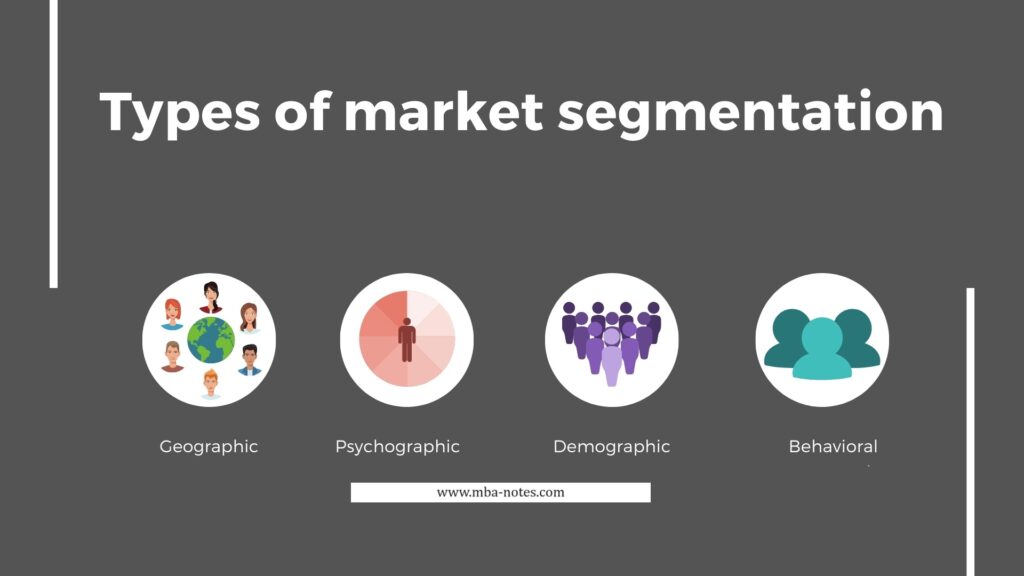What is Market Segmentation?
Market segmentation refers to a term used to describe the process of grouping potential customers into segments or groups that share a common need and react similarly to a marketing decision.

Market segmentation allows companies to focus on different types of customers who view the complete worth of specific products and services differently
from each other.
Important Point
- Market segmentation is a method of identifying certain groups of consumers in order to make products and branding to be attractive to that segment. Markets can be classified in a variety of
ways, such as geographically or demographically, as well as behaviorally. - Market segmentation assists companies in reducing risks by determining which products are most likely to gain an amount of the target market, and also the most effective ways to promote
and sell these products to consumers. - With the risk reduced and the clarity regarding the delivery and marketing of a product improved, the company can concentrate its efforts on those which are most profitable.
Understanding Market Segmentation
Most companies use three different criteria to define segments of the market:
- Homogeneity or the common requirements within a particular segment
- Distinction or being distinctive from other groups
- Reaction, or an equivalent reaction to the market
For instance, the company that manufactures athletic shoes may have segments that cater to long-distance runners and basketball players.
As distinct groups, basketball players and long-distance runners react to different advertising. Knowing the different segments of the market allows the company that makes athletic footwear to promote its brand appropriately.
Market segmentation is a broader aspect of market research that seeks to determine the most targeted segments of consumers and tailor the products and branding to ensure that it appeals to the target segment.
The goal in market segmentation would be to limit the risk of a product by determining which are most likely to get a portion of a market and determining the most efficient method to get the product for sale.
This allows the business to improve its overall effectiveness by focusing its resources on activities that yield the greatest ROI (ROI).
Companies can segment markets in a variety of ways:
- Geographically, according to region or region
- Based on age, gender or household size, or even life cycle
- Social class affects the way you think about yourself and your lifestyle
- Behaving in a way that is based on benefits, use, or in response
The goal is to allow the business to differentiate its product or messages based on the typical dimensions in the marketplace segment.
Important
Market segmentation allows a business to boost its efficiency by focusing resources on initiatives that will yield the greatest returns on investments (ROI).
Examples of Market Segmentation
It is apparent in products, and marketing, and advertising that we use daily. Automobile manufacturers benefit from their ability to spot markets that are segmented correctly and develop advertisements
and products that target those segments.
Cereal producers are active in marketing in three to four markets at the same time and push traditional brand names that attract the older consumers, and healthier brands that appeal to healthy consumers as well as establishing brand trust for the younger consumers by connecting their products with themes that appeal to children, for example, popular films.
A company that makes sports shoes may have several market segments which comprise elite athletes, frequent females who are fashion conscious, gym-goers, and middle-aged males who seek the best quality and comfort from their shoes.
In all instances, the company’s knowledge of marketing regarding each market segment allows it to design and market products that are highly regarded more effectively rather than trying to appeal to the public.
Market Segmentation FAQs
What Is the Definition of Market Segmentation?
Marketing segmentation refers to a strategy for marketing that allows we identified certain segments of customers in order that they could present specific items or product lines in a manner that is
appealing to their needs.
What Are the Types of Market Segmentation?
Different types of segmentation include homogeneity, which examines the needs of all segments, and differentiation, which examines how a particular group is distinct from other groups and reactions to the market, or how specific groups react to the market.
What Are Some Market Segmentation Strategies?
Strategies may target a certain group by its location, demographics, such as gender or age, the lifestyle or class of society, or by behavior—for example, they use their time or respond.
You can go through following article Mastering the Art of Consumer-Centric Marketing: A Guide to Winning at Each Stage of the Buying Process.